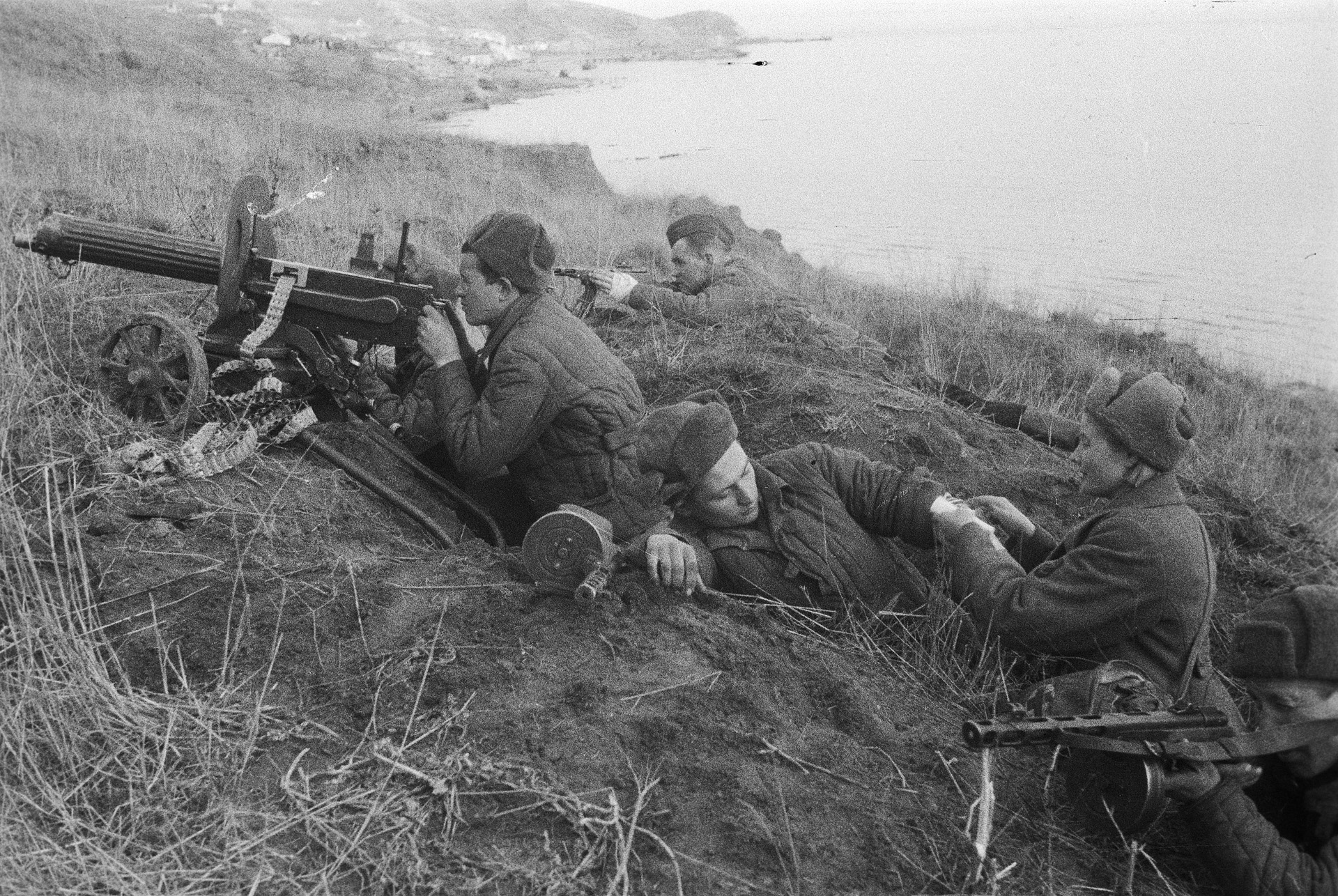Katya Mikhailova
1943
Katya Mikhailova (after 1950 – Demina) was born in Leningrad in 1926. Following the early loss of her parents, she was raised in a Leningrad orphanage.
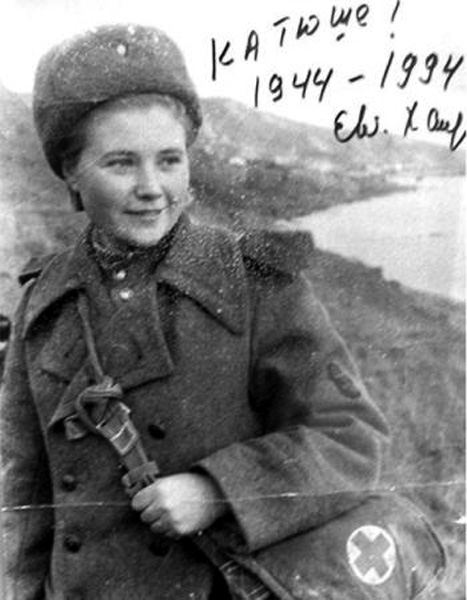
At the outbreak of the Great Patriotic War in June 1941, Mikhailova was just 15 years old. Whilst travelling to Brest in the Soviet Republic of Belarussia by train, the convoy was subjected to a Nazi Luftwaffe aerial bombardment. Having survived this German ambush, Katya became determined to contribute to the Soviet war effort and attempted to enlist for military service in Smolensk, falsely claiming to be 17 years old. However, her application was declined, and she was instead assigned to a military hospital.
Shortly thereafter, the hospital was bombed by the Luftwaffe, necessitating the evacuation of its patients. Mikhailova remained behind and, due to the severe shortage of medical personnel, assumed the role of a Red Army field medic. During combat near Gzhatsk, Katya sustained a serious leg injury and was subsequently transferred to the Ural mountain military base to recover. Upon regaining her strength, she resumed her duties aboard the Soviet navy hospital ship Red Moscow, which was responsible for transporting wounded soldiers from Stalingrad to Krasnoyarsk. For her exemplary service, Katya Mikhailova was promoted to chief petty officer and formally commended.
Seeking a more active role, Mikhailova volunteered for front-line service with the marines of the Azov Flotilla. Her request was initially denied, prompting her to appeal directly to the government in Moscow. Her persistence was ultimately rewarded, and in February 1943, she was assigned to the 369th Independent Naval Infantry Battalion. Katya first engaged in combat on the Taman Peninsula in the Azov Sea and later participated in operations in the Black Sea and along the Dniester. Subsequently, her unit was transferred to the Danube Flotilla, where she saw action in Romania, Bulgaria, Hungary, Yugoslavia, and Austria, before concluding her wartime service in Vienna.
At first, Mikhailova faced resistance from her male comrades, who were sceptical of her capabilities. However, Katya quickly earned their respect through her courage and competence on the front line. In addition to conducting reconnaissance missions alongside her fellow male soldiers, Katya provided medical treatment to the wounded and facilitated their safe evacuation. For her valour during the recapture of Temryuk on the Taman Peninsula, Katya was awarded her first medal for bravery. Furthermore, Katya received the first of two Orders of the Patriotic War in recognition of her role in the Battle of Kerch. Though, perhaps the most important recognition of her fearlessness was the admiration she won from her male comrades, whose initial attitude of skepticism toward Katya was displaced by one of adoration. This is clearly exemplified by the words below of former sailors of the Danube Flotilla about the “legendary” Katya Mikhailova.
Katya fought her way from Temryuk, leading sailors into battle. She was wounded multiple times but always returned to the front line. Decorated with orders and medals, she became a symbol of bravery for paratroopers, scouts, and medics alike.
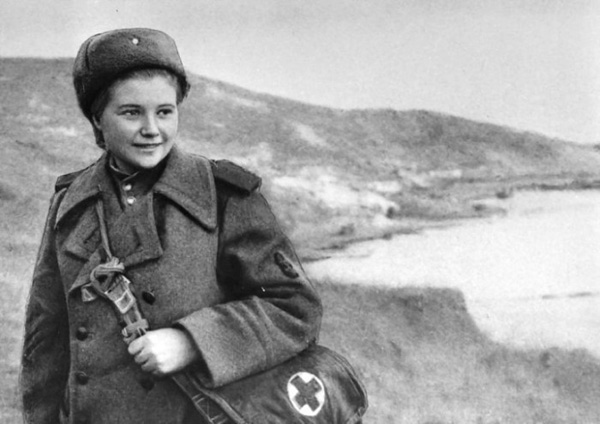
Collage of two photographs – by Evgeny Khaldey
The sailors spoke of her as a true legend. Her courage inspired others, and she was the leading figure of the battalion. However, Katya was not just a fearless fighter – she was also known for her purity and modesty, qualities that earned her deep respect among her comrades. The sailors loved and protected her, calling her “Our Katya”.
She was a soldier, a nurse, a scout – truly a favourite among her fellow combatants. What an extraordinary fate this young woman had!
In 1964 Katya recalled how she first joined the fleet. No one believed her at first when she said she could be not only a nurse but also a scout. ‘The fleet is no place for women,’ they told her. But she proved them wrong.
In the early days on the ship, she faced a cold reception from the crew. They were suspicious of her, treating her with a certain disdain. However, after intense battles, especially the Kerch operation, their attitude changed. One day, after a night of heavy drinking, the sailors came to her on bended knees, asking for forgiveness for how they had treated her before: “You have been through so much with us. Let us be your brothers.”
In August 1944, Katya Mikhailova participated in a commando operation to recapture the city of Bilhorod-Dnistrovskyi in Ukraine. Her unit crossed the Dniester estuary in rubber boats and ascended an enemy-held ridge. Katya was among the first to scale the ridge and took part in the charge to expel the Nazi enemy. She single-handedly assaulted a fortified German position, destroyed their bunker, eliminated 20 Nazis, captured 14 prisoners, and provided medical assistance to 17 wounded sailors, ensuring their evacuation to safe refuge. For her role in the assault, Mikhailova was awarded the Order of the Red Banner.
Four months later, in December 1944, her unit had advanced into Yugoslavia. During an attack on the Ilok fortress in Croatia, Mikhailova was one of 50 marines who carried out a diversionary assault from a small island in the Danube, situated below the fortress. The unit was forced to use trees as firing positions due to the island being flooded. In the ensuing firefight, Mikhailova sustained a gunshot wound to her hand. Only 13 of her unit survived the intense battle, all of whom were wounded. Some of the casualties fell from their positions into the freezing water, but Katya jumped in and, using belts and rifle slings, secured the wounded men to the trees, ultimately saving seven lives.
As a result of the battle, Mikhailovaa developed double pneumonia in addition to her hand injury, and required hospitalisation. Desperate to return to the fight, Katia left hospital prematurely without authorisation and returned to her unit. For her exceptional bravery, Mikhailova was awarded a second Order of the Red Banner.
Katya was released from military duty in November 1945 but continued her career in the medical profession following the war, including service with the Soviet Red Cross and Red Crescent Society.
In 1950, Katya graduated from the Second Leningrad Medical Institute and subsequently worked as a doctor for 36 years before retiring in 1985. In 1979, Demina was awarded the Florence Nightingale Medal by the Red Cross. This prestigious honour is bestowed upon nurses in recognition of their exceptional dedication to their profession and their bravery in providing care to the wounded and sick, both during times of war and in peacetime. Over the course of a century, only 48 women from the USSR and Russia have received this esteemed award.
Despite being nominated three times for the title of Hero of the Soviet Union – the nation’s highest distinction – Demina was repeatedly overlooked. However, on 5th May 1990, by decree of the last president of the Soviet Union, President Gorbachev, Demina was finally awarded the title, along with the Order of Lenin and the Gold Star, in commemoration of the 45th anniversary of the end of the war. Katya Demina was among the final individuals to receive this honour before the dissolution of the Soviet Union in 1991.
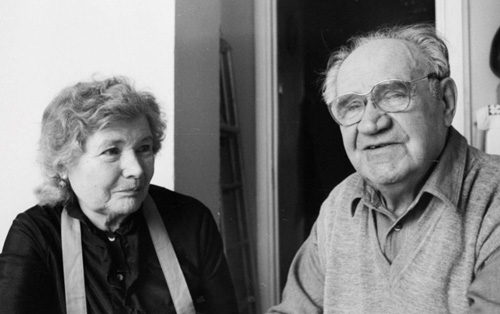
In 1994, fifty years after Evgeny Khaldey took his famous portrait of Katya with a medical bag slung over her shoulder, they – Katya Mikhailova and Evgeny Khaldey – met again at Katya’s home. KhaldeY presented her with the portrait and, of course, photographed her holding it.
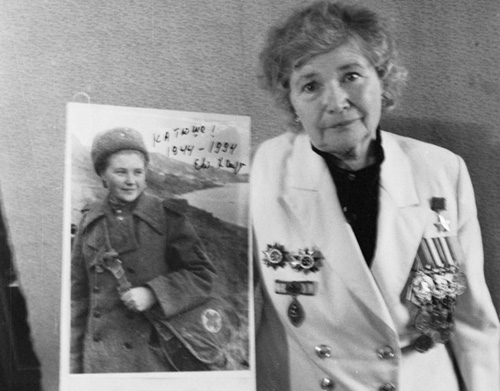
Following the passing of Yevdokiya Pasko in January 2017, Demina remained the last surviving female Hero of the Soviet Union who was a veteran of the Second World War. The only other living female recipients of the title were cosmonauts Valentina Tereshkova and Svetlana Savitskaya.
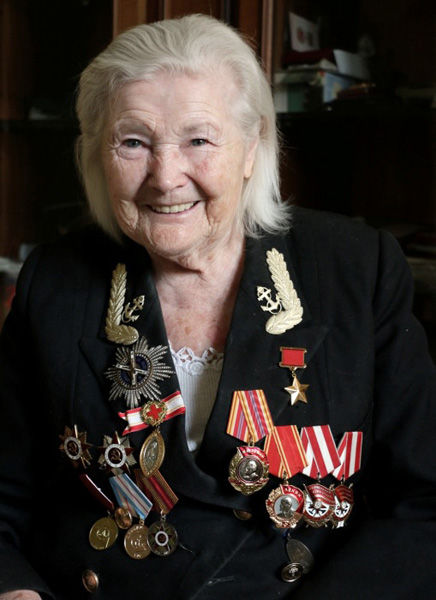
Ekaterina Demina passed away in June 2019 at the age of 93 and was laid to rest in Troyekurovskoye Cemetery.

